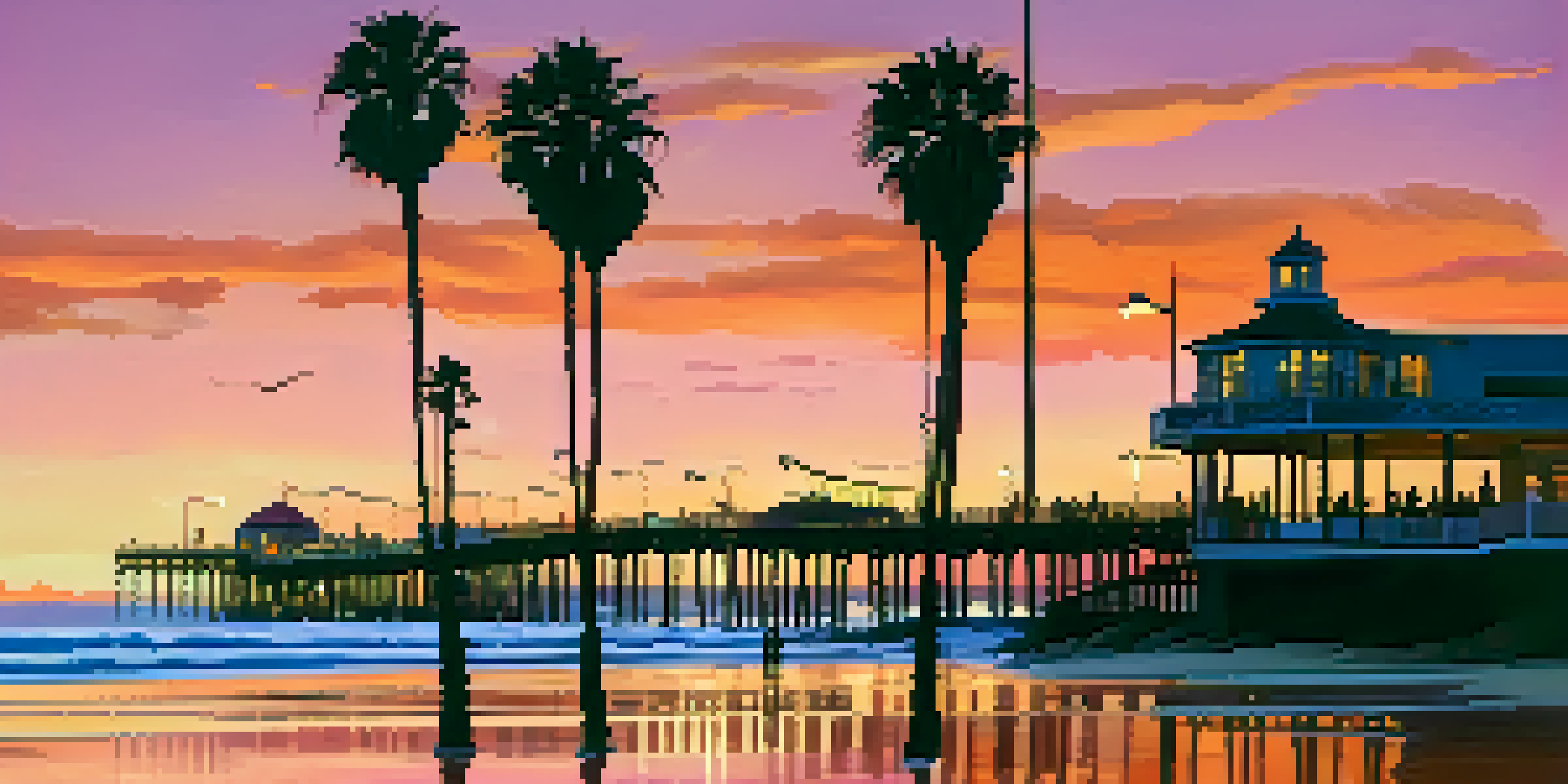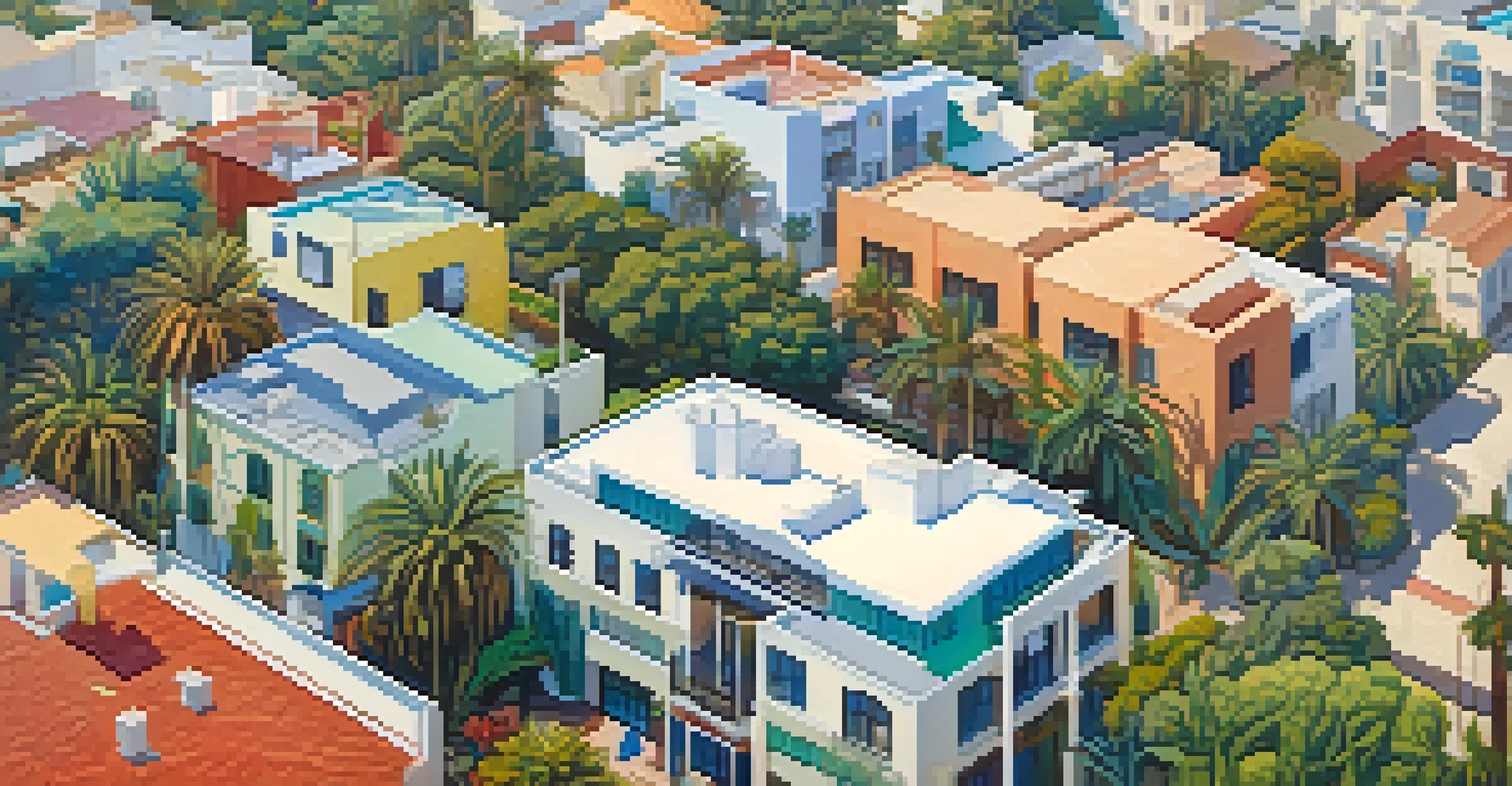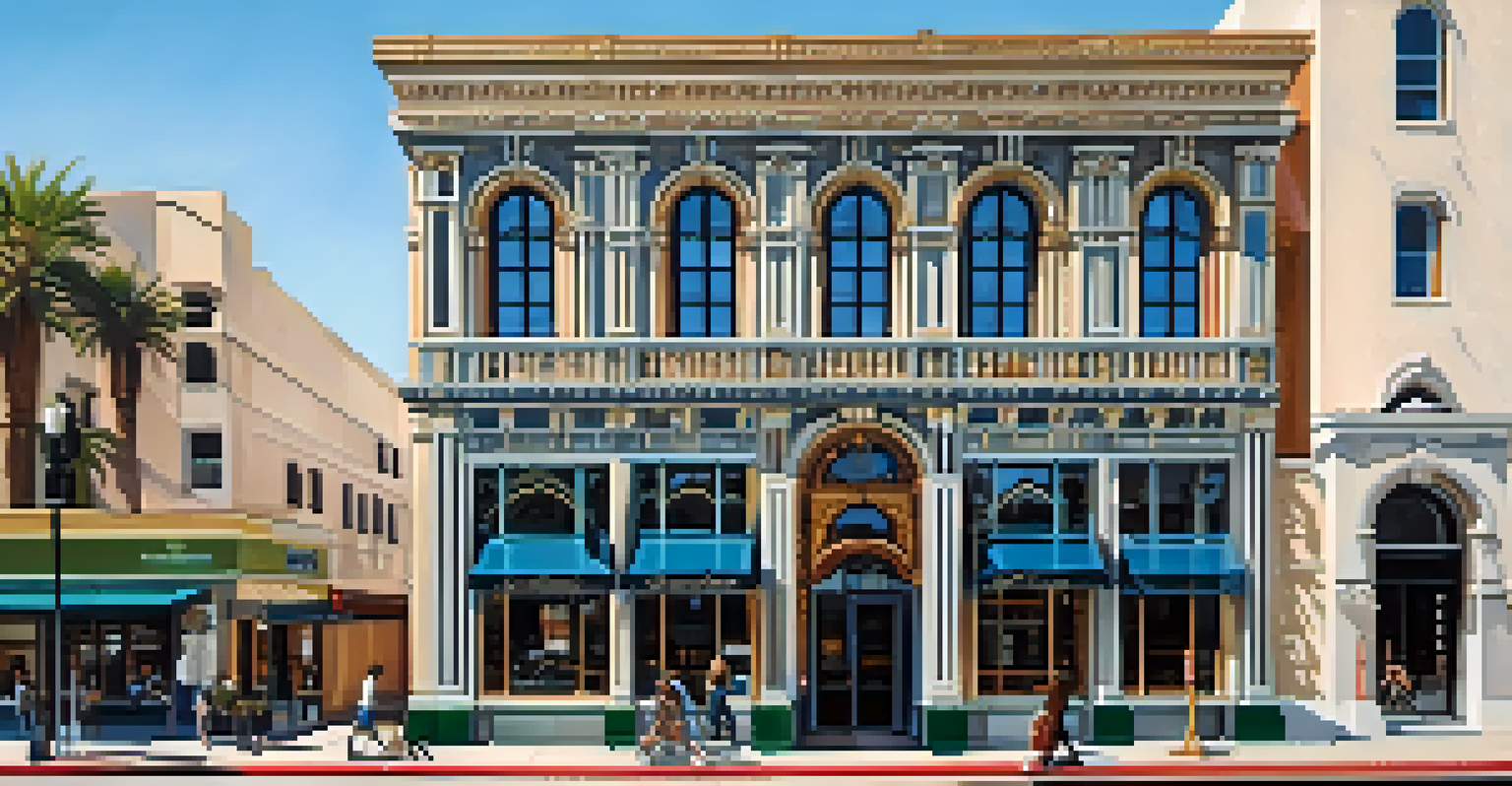Santa Monica's Architectural Evolution Through History

The Origins of Santa Monica's Architecture
Santa Monica's architectural story begins in the late 19th century when it was established as a seaside resort. The early structures, primarily Victorian-style homes and hotels, were designed to attract visitors to its beautiful beaches. These buildings often exhibited intricate woodwork and charming front porches, reflecting the era's design sensibilities.
Architecture should speak of its time and place, but yearn for timelessness.
As the city grew, Spanish Colonial Revival architecture made its mark, especially in the 1920s. This style was characterized by stucco exteriors, red-tiled roofs, and ornate details, perfectly complementing the coastal landscape. It was during this era that many iconic buildings, like the Santa Monica Pier, were constructed, showcasing this architectural charm.
The blend of these early styles set a foundation for Santa Monica's unique identity. It represented a fusion of influences that catered to both locals and tourists, creating a vibrant community. These early structures not only provided shelter but also helped shape the cultural fabric of the city.
The Rise of Modernism in the Mid-20th Century
The mid-20th century marked a significant shift in Santa Monica's architectural landscape with the rise of Modernism. This movement emphasized minimalism, functionality, and an integration with nature, leading to sleek lines and open spaces. Architects began to design structures that maximized views of the ocean and embraced the coastal climate.

Notable examples include the Santa Monica Civic Auditorium, built in 1958, which showcased the clean, geometric forms typical of the Modernist style. This period also saw the development of mid-century residential buildings that featured large windows and open floor plans, inviting the outdoors in. These designs reflected a lifestyle that celebrated the California sun and beach culture.
Santa Monica's Architectural Evolution
The city's architecture reflects a rich history of diverse styles, from Victorian to Modernism, shaping its unique identity.
Modernism's influence in Santa Monica was not just about aesthetics; it represented a changing way of life. The architecture mirrored the community's growing desire for innovation and connection to the environment, paving the way for future developments that prioritized sustainability and harmony with nature.
Post-Modernism: A New Wave of Creativity
As the 1980s approached, Santa Monica's architectural scene began to embrace Post-Modernism, characterized by its eclectic styles and playful elements. This movement broke away from the strict rules of Modernism, allowing for a mix of historical references and bold colors. Buildings started to feature decorative elements and varied materials, creating visual interest throughout the city.
Sustainability is not a destination, but a journey.
One standout example is the Santa Monica Place, which opened in 1980, blending shopping with an open-air design. This space reflected the community's desire for social interaction and leisure, embodying the vibrant culture of the era. The architecture encouraged people to gather, shop, and enjoy the coastal atmosphere.
Post-Modernism also fostered a sense of identity, as architects experimented with styles that resonated with Santa Monica's diverse population. This new wave of creativity brought a refreshing energy to the city, transforming it into a canvas for artistic expression while still honoring its historical roots.
Sustainable Architecture: A Modern Commitment
In recent years, Santa Monica has taken significant strides toward sustainable architecture, reflecting a growing global awareness of environmental issues. The city has adopted policies that encourage green building practices, resulting in innovative designs that prioritize energy efficiency and ecological responsibility. This shift is evident in new developments that incorporate renewable energy sources and sustainable materials.
One notable example is the LEED-certified buildings along Ocean Avenue, which showcase how modern architecture can harmoniously blend with the environment. These structures not only reduce their carbon footprint but also enhance the aesthetic appeal of the area. The city's commitment to sustainability is paving the way for a future where architecture and nature coexist beautifully.
Sustainability in Modern Design
Recent developments prioritize sustainable architecture, showcasing innovative designs that harmonize with the environment.
Sustainable architecture in Santa Monica is about more than just buildings; it's a reflection of the community's values. As residents and visitors alike embrace this commitment, the city continues to evolve, setting an example for others to follow in creating spaces that are both functional and environmentally friendly.
Cultural Influences on Santa Monica's Architecture
Santa Monica's architectural evolution is deeply intertwined with its diverse cultural influences. The city's rich history as a melting pot of different communities has shaped its buildings and public spaces. From the early Spanish settlers to the influx of artists and innovators in the 20th century, each group has left its mark on the architecture.
This cultural blend is evident in the eclectic styles found throughout the city, from Mediterranean-inspired villas to contemporary lofts. Each building tells a story, reflecting the values and traditions of those who lived and worked in Santa Monica. This diversity not only enriches the architectural landscape but also fosters a sense of community and belonging.
The interplay of cultures has also inspired public art installations that complement the architecture, creating a vibrant atmosphere. As Santa Monica continues to evolve, it remains a testament to the power of cultural influences in shaping not just buildings, but a cohesive community identity.
Preservation Efforts: Balancing History and Progress
As Santa Monica grows and modernizes, preservation efforts play a crucial role in maintaining the city's architectural heritage. Many historic buildings are being lovingly restored to retain their original character, serving as reminders of the city's rich past. Organizations and local government initiatives work together to identify and protect these architectural treasures.
The preservation of iconic structures like the Annenberg Community Beach House not only honors the city's history but also enhances the community's sense of place. These efforts ensure that future generations can appreciate the unique architecture that tells Santa Monica's story, even as the city embraces change.
Preserving Historical Heritage
Efforts to restore and protect historic buildings ensure that Santa Monica's architectural legacy is honored amid modernization.
Balancing preservation with new development is no easy feat, but Santa Monica's commitment to its architectural history is evident. By integrating modern designs alongside historic buildings, the city creates a dynamic landscape that respects its past while looking forward, making it a fascinating place to explore.
The Future of Santa Monica's Architecture
As we look to the future, Santa Monica's architecture is poised to continue its evolution, reflecting the changing needs and values of the community. Innovations in technology and design are opening up new possibilities for creating spaces that are not only beautiful but also functional and environmentally sustainable. The city is embracing smart building technologies that enhance livability and connectivity.
Moreover, the ongoing conversation about affordable housing and urban development will shape the architectural landscape in the coming years. Finding solutions that address the needs of a growing population while respecting the character of the city will be essential. This balancing act presents both challenges and opportunities for architects and developers.

Ultimately, the future of Santa Monica's architecture will remain rooted in its rich history while embracing new ideas and practices. As the city moves forward, it will continue to be a canvas for creativity, innovation, and sustainability, ensuring that its architectural journey remains one of dynamic growth and transformation.